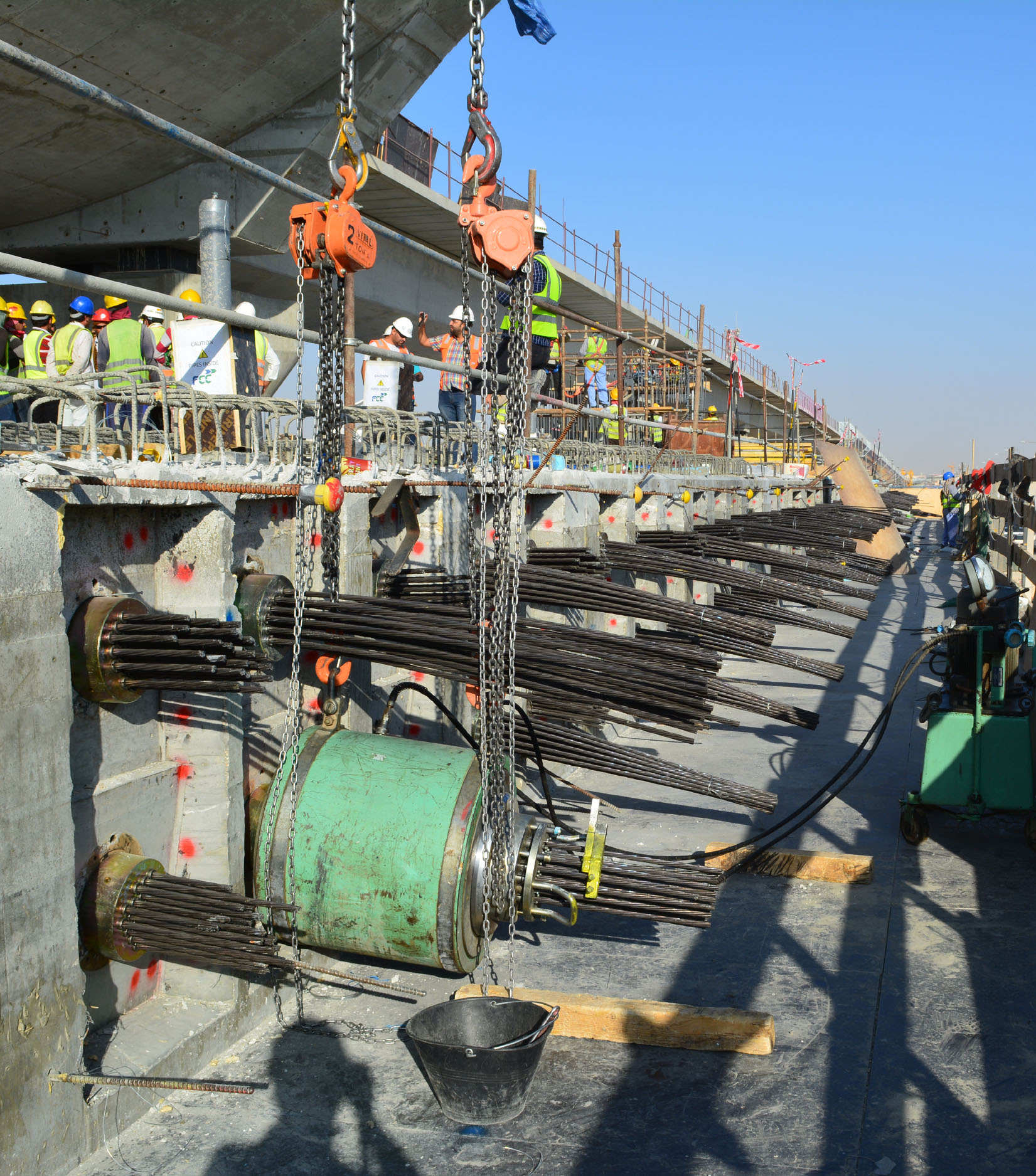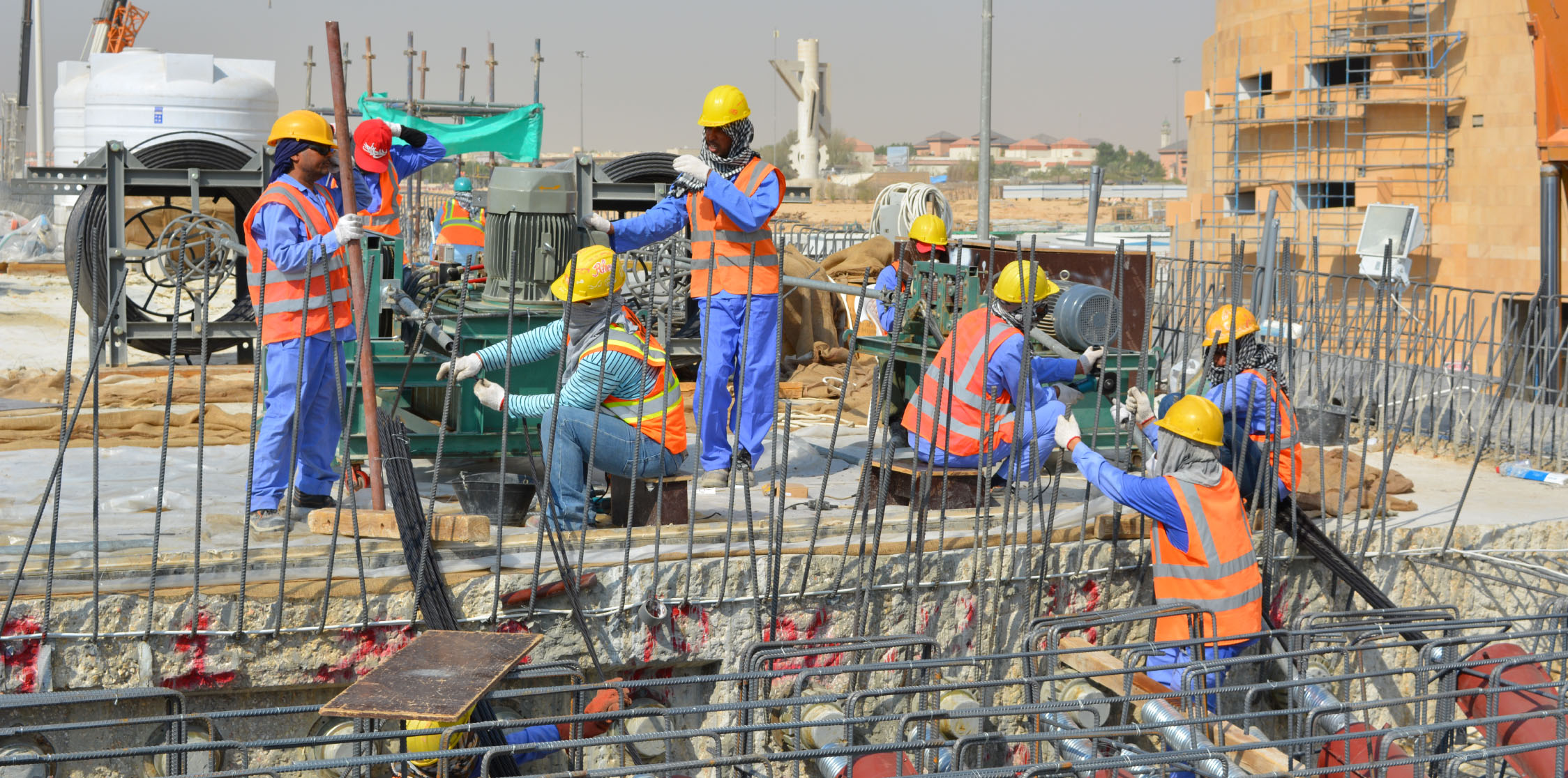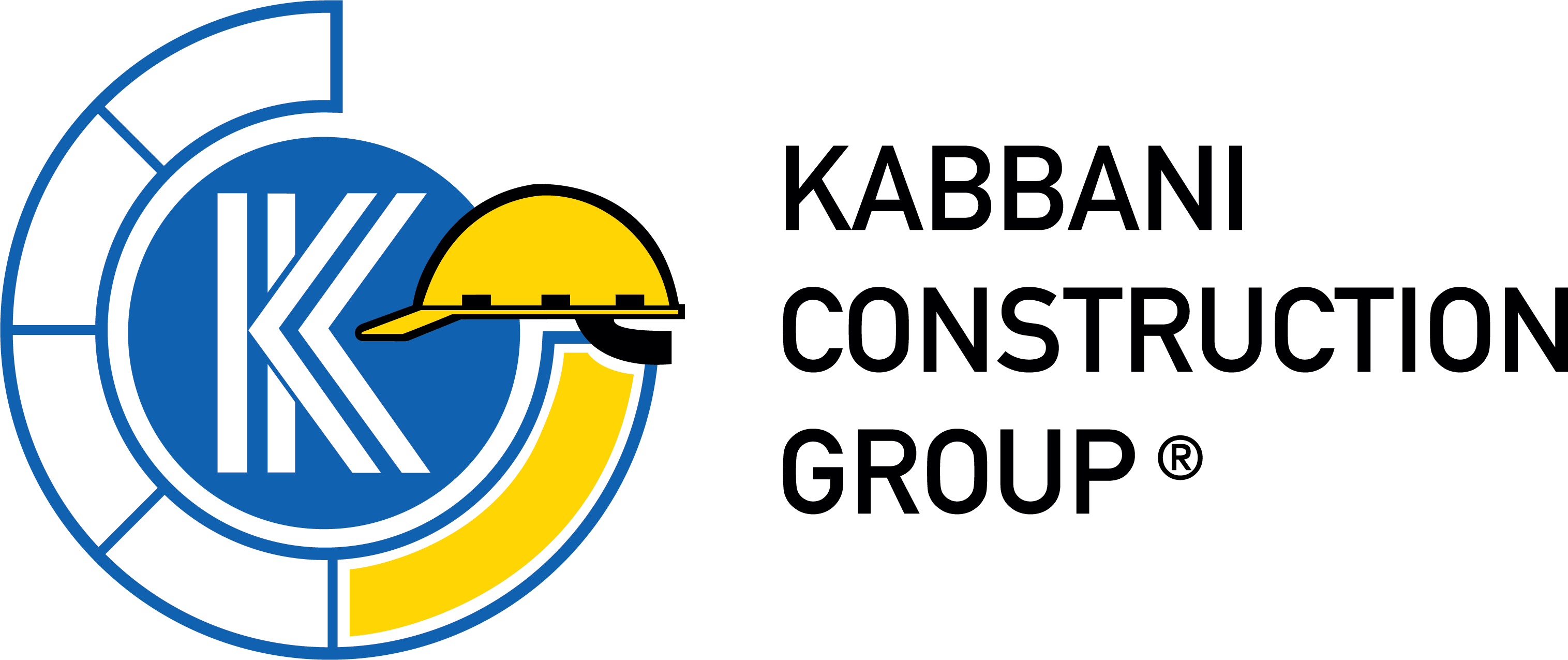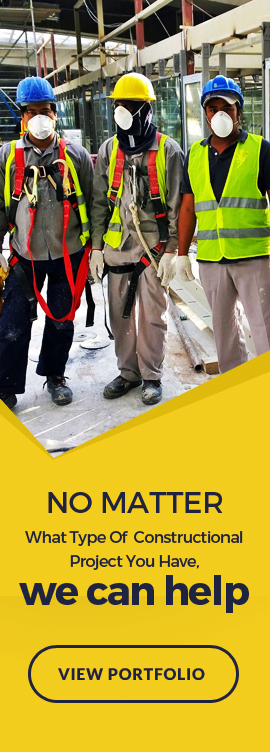Post-Tensioning
Post tensioning is a technique for reinforcing concrete. Post-tensioning tendons, which are prestressing steel cables inside plastic ducts or sleeves, are positioned in the forms before the concrete is placed. Afterwards, once the concrete has gained strength but before the service loads are applied, the cables are pulled tight, or tensioned, and anchored against the outer edges of the concrete.
Post-tensioning is a form of prestressing. Prestressing simply means that the steel is stressed (pulled or tensioned) before the concrete has to support the service loads. Most precast, prestressed concrete is actually pre-tensioned-the steel is pulled before the concrete is poured. Post-tensioned concrete means that the concrete is poured and then the tension is applied-but it is still stressed before the loads are applied so it is still prestressed.

Construction of post-tensioned slabs on grade is very similar to using reinforcing steel, except for the tensioning step. Cables are arranged as indicated by the engineer and chaired to run through the center of the slab. For residential construction, tendons at 48 inches on center are common. Commercial foundations will have much more steel. Tendons can be easily routed around obstructions.
A residential post-tensioned concrete slab will typically be 8 inches thick and use 3000 psi concrete. Once the concrete has gained strength to 2000 psi, typically within the 3 to 10 days recommended by PTI, the tendons are stressed.
Tendons today are seven high-strength steel wires wound together and placed inside a plastic duct. At each end a PT anchor is located and these are located in pockets embedded into the slab edge. When the strands are stressed, the wires will stretch—about 4 inches for a 50 foot strand—to apply 33,000 pounds of load. Stressing should only be done by qualified workers. After stressing, the tendon is cut off and the pocket in which the anchors are located is filled with grout to protect them from corrosion.
Larger structural concrete members may also be post-tensioned, especially in bridges and floors and beams in parking structures. The process is very similar to that used for slabs, except on a bigger scale. One interesting difference is that the tendons will often be “draped” so that they are low at the midpoint of a beam and high at the supports—this places the steel at the point of highest tension where it can keep the concrete held together tightly. With structural members the duct is often grouted full following stressing to bond the strand to the concrete along its entire length—these are called bonded tendons. Unbonded tendons, used in residential slabs, remain free to move within the duct and are protected from corrosion by grease.

Post-Tensioning In Detail
Advantages of Post-Tensioning
- It reduces or eliminates shrinkage cracking-therefore no joints, or fewer joints, are needed
- Cracks that do form are held tightly together
- It allows slabs and other structural members to be thinner
- It allows us to build slabs on expansive or soft soils
- It lets us design longer spans in elevated members, like floors or beams
Post-Tensioning Applications
The applications for post-tensioning are almost endless. Some of the more common applications are:
- Slabs on ground: Today, PT is used extensively for slabs on grade where soils are likely to move (expansive soils).
- Another good application for PT slabs is producing crack-free tennis courts.
- A recently developed application of PT is external post-tensioning for strengthening of existing structures, especially as an upgrade to resist seismic forces.
- Bridge designers have used PT both for cast-in-place concrete and for precast segmental construction. PT allows longer spans and keeps cracks tight.
- Concrete water tanks are often post-tensioned to reduce crack width and leakage.
- Masonry walls can be post-tensioned – this is usually done with a solid steel bar fastened to the foundation and stressed with a nut at the wall’s top.


